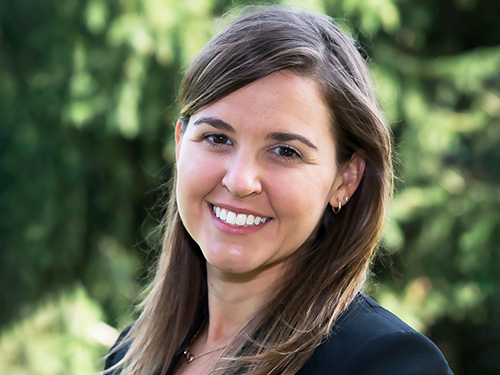Featured Customer: Amandaa Brewer, Ph.D.

Analyzing polymers day in and day out might sound dry or tortuous to some, but it’s hard to resist the infectious enthusiasm expressed by Dr. Amandaa Brewer of Arkema, Inc. who has made it her career and passion. Perhaps the joy of working with Wyatt instruments contributed just a little…? Amandaa has graciously agreed to be interviewed, so read on to find out!
Please tell us about your background: where you grew up, studied and the field you chose.
I grew up in Gainesville, Florida (Go Gators!) and I am the oldest of five. My love for chemistry started in high school, as I had an amazing teacher. When it was time to pick a college, I wanted a place far away from home, a personalized learning experience and a hands on chemistry program, which landed me at Roanoke College in Salem, Virginia. I received my Bachelor’s degree in Chemistry from Roanoke College and then returned to Florida for graduate school. I received my Ph.D. in Analytical Chemistry from Florida State University (FSU). My Ph.D. thesis was under Dr. Andre Striegel and titled “Multi-Detector Hydrodynamic Chromatography: Particle Characterization and Ultra-High Molar Mass Polymer Analysis.”
What led you to choose those fields? What are the challenges that excite you?
My interest in analytical chemistry began while at Roanoke College. I loved everything ‘theoretical’ about inorganic chemistry but learned very fast that ‘making’ compounds was not for me. My joy and talent was in running the analytical equipment and interpretation of results. I carried that passion to graduate school and worked on size-based separation methods, such as size-exclusion (SEC) and hydrodynamic chromatography (HDC) coupled to multi detection methods, namely multi-angle light scattering, quasi-elastic light scattering, differential viscometry, and differential refractometry. As I have moved from graduate school to industry, the application of multi-detector SEC and HDC to ‘real world’ polymers both excites and challenges me. Every polymer is different and brings its own unique set of properties and thus characterization challenges. Additionally, I am excited about tackling those challenges and continuing to push the limits of multi-detector SEC and HDC.
What does your current position entail? How does it tie into your previous experience, and where is it going?
I am currently a Senior Research Scientist in the Analytical and Systems Research Group at Arkema Inc. I am responsible for the Size Exclusion Chromatography Laboratory at Arkema’s North America Research and Development site in King of Prussia, Pennsylvania. I am one of those unique individuals that can say their current position entails exactly what their Ph.D. focused on. Here at Arkema, my job is to use multi-detector SEC to gain a fundamental understand of the polymers we make. Therefore, I spend a lot of time trying to figure out what the plethora of results obtained from multi-detector SEC mean and how they correlate with the end-use properties of various polymers as well as other analytical techniques.
In what context did you first learn about light scattering and Wyatt instruments?
I first learned about light scattering and Wyatt instruments in graduate school. The Striegel lab was home to various Wyatt detectors, which became key components to my graduate work. The theory of light scattering and viscometry was taught throughout my graduate work, as nothing was a ‘black box’. Being that I was working with ultra-high molar mass polymers and particles, I learned everything from Rayleigh-Gans-Debye to Mie Scattering. Since leaving graduate school, I have continued to build my multi-detector SEC stacks using Wyatt detectors.
How has MALS contributed to your research and development studies?
WIn graduate school, MALS was an essential portion of my research as I was studying ultra-high molar mass polymers and particles that did not have calibration standards. In fact, I had never used conventional calibration for molar mass measurements until I started in industry. Here at Arkema, MALS as well as VISC are essential in our research and development. We use both of these detectors along with other analytical techniques to obtain a full understanding of the physicochemical properties of our products. By combining all of these tools, we are able to have a better understanding of both the bulk properties as well as the distributions of various properties for a given polymer.
Any personal anecdotes that would help illuminate your career, interests, connection to Wyatt or outlook for the readers?
Owning a Wyatt detector means that you are a member of the Wyatt family. Over the years, I have established a network within the Wyatt family that allows for technical discussions on multiple levels. I am notoriously pushing the detectors to their limits and the support I receive from both the East and West Coast staff at Wyatt is essential in keeping my research going.

Owning a Wyatt detector means that you are a member of the Wyatt family. The support I receive from both the East and West coast staff at Wyatt is essential in keeping my research going.
